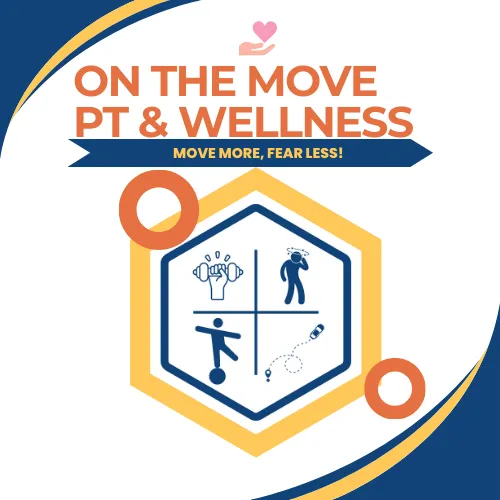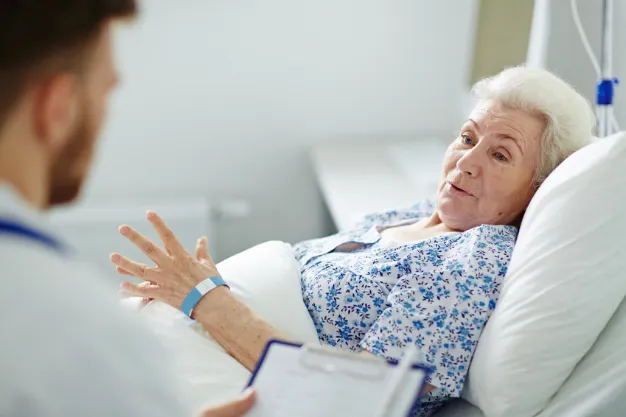Stroke in Richardson, TX

Rebuild Strength and Independence After Stroke in Richardson, TX
A stroke can present overwhelming mobility challenges, making everyday tasks difficult. Finding the right rehabilitation approach is essential to regaining independence. At On The Move PT & Wellness, our stroke rehabilitation specialists create customized treatment plans designed to help patients restore movement, improve function, and regain confidence.
Benefits of Physical Therapy for Stroke Recovery
Physical therapy plays a crucial role in stroke rehabilitation, offering numerous evidence-based benefits that support recovery:
- Neuroplasticity Enhancement – Regular physical therapy activates the brain’s natural ability to rewire and form new neural connections, helping restore lost functions and develop compensatory strategies.
- Muscle Strength and Control – Targeted exercises prevent muscle atrophy and improve motor control, helping patients regain the strength needed for daily activities and independent movement.
- Fall Prevention – Specialized balance training and gait exercises reduce fall risk by improving stability, coordination, and awareness of body positioning in space.
- Spasticity Management – Therapeutic techniques help manage muscle tightness and improve joint mobility, making movements more fluid and controlled.
- Independence in Daily Activities – Task-specific training helps patients relearn essential activities like dressing, bathing, and meal preparation, reducing reliance on caregivers.
- Pain Management – Physical therapy techniques can address post-stroke pain and discomfort, improving quality of life and participation in rehabilitation activities.
- Cardiovascular Health – Carefully monitored exercise programs help improve endurance and reduce the risk of future strokes while supporting overall recovery.
Comprehensive Stroke Recovery Care
Our experienced therapists use evidence-based techniques to guide stroke survivors through recovery. We focus on:
- Maximizing Safety and Comfort – Preventing falls and building trust through structured, achievable therapy sessions.
- Restoring Functional Mobility – Improving coordination, strength, and balance through repetitive task training tailored to daily activities like walking, dressing, and grooming.
Common Post-Stroke Challenges We Address
Each stroke affects individuals differently depending on the area of the brain impacted. Our therapy targets the most common impairments, including:
- Muscle Weakness – Reduced ability to activate muscles needed for movement.
- Spasticity – Increased muscle stiffness that limits coordination and range of motion.
- Balance Deficits – Impaired equilibrium increasing fall risk.
- Aphasia – Difficulty speaking or understanding language.
- Apraxia – Challenges performing learned tasks like brushing hair or buttoning a shirt.
- Sensory and Perceptual Changes – Altered awareness of surroundings, impacting safety and mobility.
By identifying each patient’s unique challenges, we implement targeted interventions to encourage neuroplasticity and optimize recovery potential.
Personalized Stroke Rehabilitation Programs
Unlike one-size-fits-all approaches, our therapy is tailored to each individual’s needs. We use:
- Mobility Training – Relearning transitions like sit-to-stand and improving walking mechanics.
- Functional Exercises – Strengthening movements needed for daily tasks like gripping utensils or reaching for objects.
- Balance and Postural Training – Using assisted weight shifts and stability drills to improve coordination.
- Speech and Swallowing Therapy – Strengthening oral muscles to enhance speech clarity and safe swallowing.
- Technology-Assisted Rehabilitation – Integrating robotic-assisted devices and interactive simulations for task-specific motor training.
- Caregiver Education – Providing at-home strategies to reinforce recovery progress.
Through consistent repetition and personalized progression, we help patients rebuild skills at their own pace, fostering confidence and long-term improvement.
Frequently Asked Questions About Stroke Rehabilitation
What is the best treatment after a stroke?
Research supports starting physical, occupational, and speech therapy as early as possible to encourage neuroplasticity—the brain’s ability to form new connections. Repetitive, goal-oriented therapy helps restore movement and function.
What types of therapy are most helpful for stroke recovery?
Most stroke survivors benefit from a combination of:
- Physical therapy for mobility, coordination, and strength
- Occupational therapy for daily activities like dressing and eating
- Speech therapy for communication and swallowing difficulties
How long does stroke recovery take?
The recovery timeline varies for each individual. The most rapid progress typically occurs within the first six months, but with consistent rehabilitation, improvements can continue for a year or more.
What factors contribute to better stroke recovery?
Successful recovery depends on a combination of:
- Consistent participation in therapy
- Regular physical activity and mobility exercises
- Proper nutrition and sleep
- Adherence to medications and medical guidance
Meet Your Stroke Rehabilitation Specialist
At On The Move PT & Wellness, your recovery is led by experienced professionals dedicated to neurological rehabilitation:
Dr. Carly Thompson, PT, DPT, AIB-VRC
Clinic Owner & Physical Therapist
Dr. Thompson brings specialized expertise in neurological rehabilitation and balance disorders to stroke recovery treatment. As a Doctor of Physical Therapy with advanced certification from The American Institute of Balance, she has extensive experience helping patients overcome movement challenges and rebuild confidence after neurological events.
Dr. Thompson’s approach to stroke rehabilitation focuses on:
- Evidence-based treatment techniques for improving balance and reducing fall risk
- Specialized exercise programs to enhance mobility and functional independence
- Comprehensive assessment and treatment of post-stroke dizziness and vestibular issues
- Personalized strategies to help patients return to their daily activities safely
Her commitment to treating the whole person, combined with her expertise in vestibular rehabilitation and balance disorders, makes her particularly effective in addressing the complex challenges that stroke survivors face during recovery. Dr. Thompson’s passion lies in helping patients overcome their fear of movement and regain confidence in their daily activities.
Regain Independence and Rebuild Confidence
A stroke may have changed your mobility, communication, or daily routines, but recovery is possible. Our team at On The Move PT & Wellness is dedicated to helping you regain function through structured, personalized therapy.
Start Your Stroke Rehabilitation Journey Today
Take the first step toward recovery by scheduling an assessment with one of our neurological rehabilitation specialists. Contact On The Move PT & Wellness in Richardson, TX to develop a customized plan that supports your goals and restores your independence.



